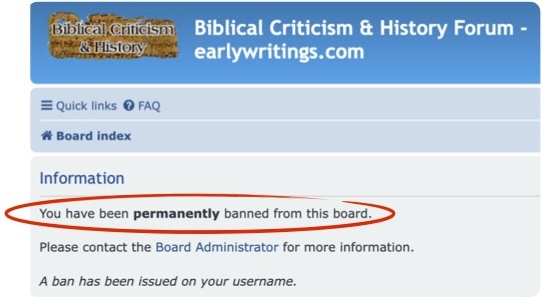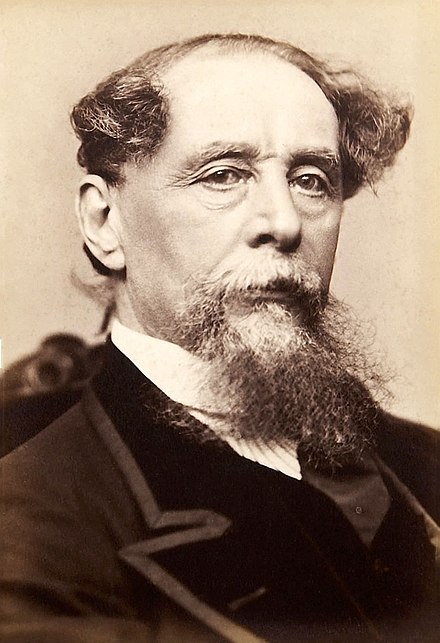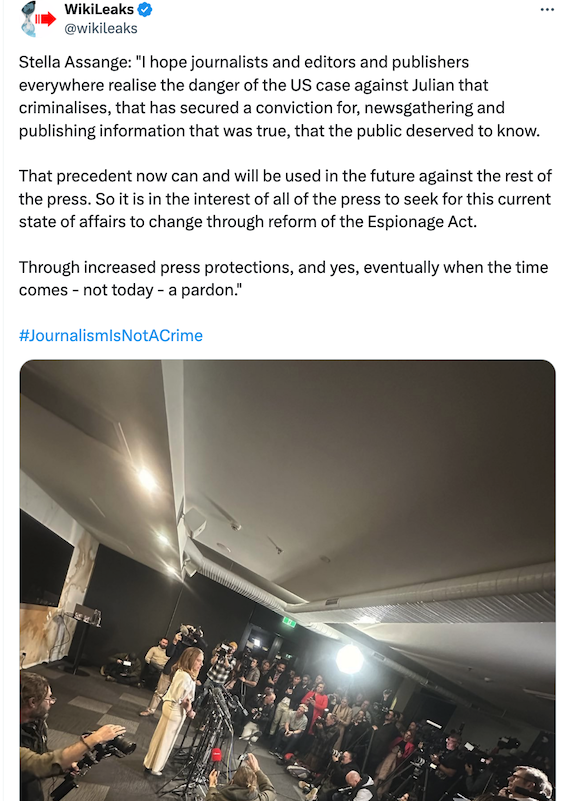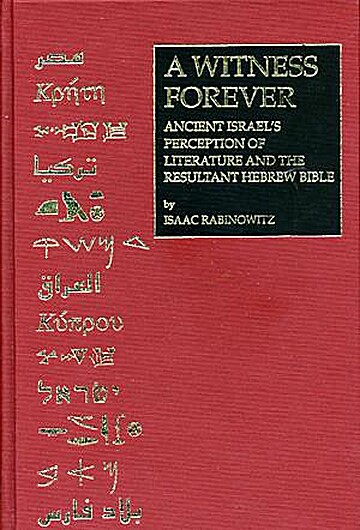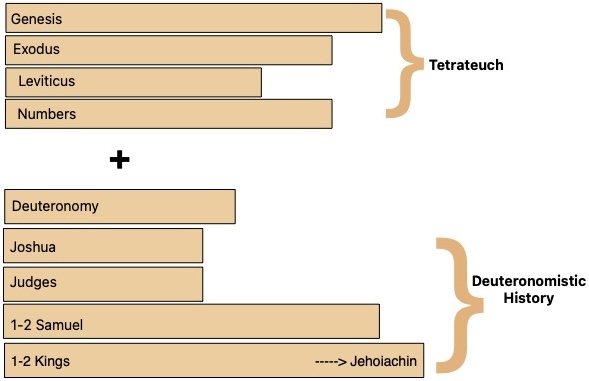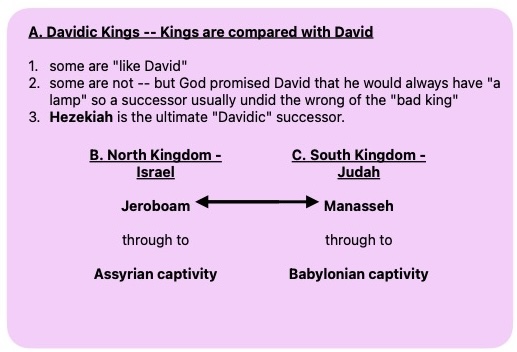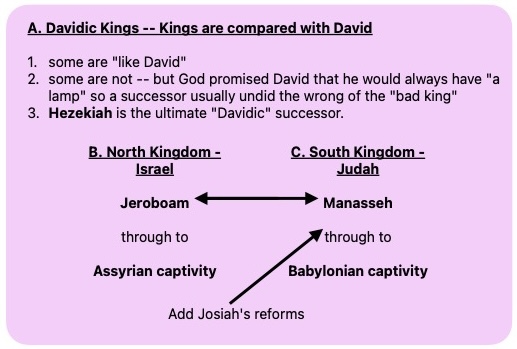To freeload off the Gospel of Luke’s prologue, inasmuch as many have taken in hand to set in order an account of those things which have been written in Galatians, I have decided not to add my own variant to their number, but to set forth one by one the accounts of our predecessors so that ye may understand the breadth of understanding that has gone before us, compare, and ponder.
I hope to cover the views of Bruno Bauer, G. A. van den Bergh van Eysinga, J.C. O’Neill, Joseph Turmel, and any others that come to mind along the way. (Suggestions welcome but not necessarily followed up.) My main focus will be on the first two chapters of Galatians since this exercise is partly an attempt to think more clearly about the questions I raised in my previous post. I should also add a range of commentaries where they focus on Galatians 2:6.
First off the rank will be Robert M. Price’s presentation of Galatians 1 and 2 from The Pre-Nicene New Testament.
… In my view, Marcion wrote only what we read as chapters 3-6. The first two chapters, in their first form, were added subsequently by Marcionites as a rebuttal to the story in Acts, which attempts to co-opt Paul, and with him Paulinists (Marcionites, Encratites. Gnostics), for Catholic Christianity. (316)
Price makes some reasonable points, I believe:
Bruno Bauer, Rudolf Steck, W. C. van Manen, and others have observed numerous contradictions and anachronisms implying that the work is multi-layered, having gone through the hands of various redactors, and that even the original form was pseudepigraphical. Van Manen judged that Marcion himself wrote the first draft. I take Marcion as the author, partly because of the striking comment of Tertullian (Against Marcion, 5: chap. 3) that “Marcion, discovering the Epistle of Paul to the Galatians,… labors very hard to destroy the character of these Gospels which are published as genuine and under the names of the apostles.” If we take “discover” in its strongest sense, the comment implies no one had seen the epistle before. (315)
The translation and notes in the right hand column are Robert Price’s. The italics in Price’s translation indicate disputed passages that are not found in all manuscripts. I have added the green-ish shading to make them more easily noticed. I would normally use a more familiar translation (RSV, NIV, etc) but hopefully the publishers will not mind if I copy just the two chapters of Price’s worth-reading translation. Fresh translations, as Price himself points out, help us to read all too familiar passages afresh. I have highlighted in yellow the problematic passage discussed earlier, which agrees with Ken Olson’s explanation.
| 1
1Paul, an apostle, not sent from any human authority, neither by human beings, but by Jesus Christ and God the Father, the one who has raised him from the dead, 2and with me, all the brothers,a to the congregations of Galatia: |
a. “Brothers” denotes itinerant missionaries. |
| 3May you enjoy the favor and the protection of God our Father and the Lord Jesus Christ, 4the one who has given himself for the sake of our sins, so he might rescue us out of the present evil age in accordance with the will of our God and Father, 5to whom all worship is due throughout ages multiplied by ages. Amen. | |
| 6I am astonished that already this soon you are detaching yourselves from the one who called you by the favor of Christ, embracing a different message of salvation, 7which in fact is not another, only that there are some bothering you and intent on perverting the news of Christ. 8As for that, even if we or some angel from heaven should proclaim to you some message of salvation besides the one we proclaimed to you, let him be excommunicated! 9Let me just repeat that for emphasis. If anyone proclaims a message of salvation beside the one you first welcomed, let him be excommunicated!b | b. This anticipates the claim that the Mosaic Torah was the gift of angels, not of God (cf. 3:19-20 below); thus a Judaizing gospel must be the creation of angels, too. |
| 10Is that blunt enough for you? Am I ingratiating myself with my audience now or am I calling down God? Or am I mincing words to flatter men? For if I were still concerned to meet the expectations of mere mortals, I would have chosen some other task than being a slave of Christ. 11For I am letting you know, brothers, that the news preached by me is not human in origin, 12for it was not from human beings that I received it, nor was I instructed in it;c on the contrary, it was revealed by Jesus Christ.d 13You are acquainted with my actions while I belonged to Judaism,e how I went to insane lengths persecuting God’s community and laid it waste, 14and progressed in Jewish religion beyond many contemporaries in my race, being many times over a zealot for my ancestral traditions.f | c. What lies in the background here is Paul’s instruction by Ananias of Damascus, as in Acts 9:17-19. |
| d. The same claim is borrowed for Peter in Matt. 16:16-18. | |
| e. As Bruno Bauer and J. C. O’Neill point out, the use of this term is anachronistic, presupposing two distinct religions, which was not yet clear in Paul’s day. The word was used in the first century, but only to offset Judaism from paganism. It had not yet come to be used vis-a-vis Christianity. O’Neill brackets verses 13-14 as an interpolation, veering off the train of argument. | |
| f. Note the seeming equation of Jewish zeal with the persecution of Christians. | |
| 15And yet, when God, who had watched over me since my umbilical cord was cut, 16thought it choice irony to reveal his Son to me,g and called me by his favor in order for me to proclaim him among the nations, I paused not to consult with flesh and blood, 17neither did I go up at once to Jerusalem to the apostles previous to me.h No, I took off for Arabia and went back to Damascus.i
18It was only after three years that I went up to Jerusalem to consult with Cephas and remained with him fifteen days.j 19But I did not so much as see any of the other apostles except for James, the Lord’s brother.k 20Now in this recounting, I swear before God: I am not lying!l 21From there I went into the regions of Syria and Cilicia. 22And still I remained known only by reputation to the congregations in Christ of Judea.m 23They only heard rumors: “The one who persecuted us now preaches the very religionn he was then intent on destroying!”o 24And they worshipped God on account of my case. |
g. Here we find the influence of Euripides’ Bacchae, where Dionysus hypnotically compels the conversion of his persecutor, Pentheus, as part of a death trap. See also the irony-laden words of Christ in Acts 9:16. |
| h. Again, contra Acts 9:26-27. | |
| i. The writer presupposes the narrative of Acts since Damascus has not been mentioned previously, as it is in Acts 9. | |
| j. He remembers the exact duration fourteen years later? This sounds like a narrator simply positing plausible times and seasons for the sake of a story. | |
| k. In Tertullian’s treatise, Against Marcion, he does not mention this first visit, implying the text of Galatians did not yet mention it either. If it had, Tertullian surely would have made hay of it: it would have clearly implied Paul’s subordination to the Jerusalem authorities, a point Tertullian would have used against Marcion. He didn’t, though, implying that he didn’t have it to use. Thus, it is a later insertion designed to abet the notion that Paul did go to Jerusalem to submit himself to the twelve as soon as he was able. “Again” was added to 2:1 at the same time by way of harmonization. Tertullian mentions the visit of 2:1-10 apparently as the visit, not as a second visit. | |
| l. Obviously, this is a rebuttal to another account, widely known, in which Paul was a delegate of mortal agencies and had at once submitted himself to the previous apostles. Either the writer is responding to Acts 9 or that was the common version, which our writer seeks to overthrow, rewriting history in the interests of later sectarian strife. | |
| m. Contrary to Acts 9:28-30. | |
| n. The term here literally reads “the faith,” generally considered to be post-Pauline usage. | |
| o. This is a crucial admission that the whole notion of Paul as a persecutor is the product of popular rumor. In all probability it is a distortion of the Ebionite claim that Paul, as an anti-Torah Christian, had opposed the true Christian religion—theirs. In a later time, when few remembered the sectarian divisions of an earlier generation, this version was misunderstood as if Paul, a non-Christian, had physically persecuted believers in Christianity per se. | |
| 2
1Then, after an interval of fourteen years, I went up to Jerusalem again with Bar-Nabas, taking along Titus, too. 2And I went up, summoned by a revelation.p And I laid out before them the news as I proclaim it among the nations, in private session with those of great repute, for fear I might have been running off course.q 3But my companion Titus, a Greek, was not compelled to be circumcised. He was willing to go along with it voluntarily as a concession. 4But on account of the pseudo-brothers who had sneaked into the sessionr in order to spy on our freedom from the Torah that we gentiles have in Christ, thinking they would enslave us, 5we yielded to them in submission but for an hour in order to preserve the news for you.s 6But as for those esteemed to be something greatt—what they were then makes no difference to me now; God is impressed by no man’s clout—those of repute added no proviso to me. 7On the contrary! Once they saw how I had been entrusted by God with the news for the uncircumcised, just as Peter was for the circumcised, 8the one energizing Peter for an apostolate to the circumcised energizing me also, but to the nations, 9and acknowledging the favor shown me by God, James and Cephas and John, the ones reputed to be Pillars,u offered to me and to Bar-Nabas the good right hand of partnership, dividing the territory: we would henceforth go to the nations, they to the circumcised,v 10except that we should not forget the Poor,w the very thing I was eager to do in any case! |
p. Note that he is not making an appearance in Jerusalem at the behest of any human authority, contra Acts 15:2. |
| q. Here we find a retrojection into imagined apostolic times of Marcion’s own visit to Rome to join the church there and voluntarily disclose his doctrine. Obviously at the time, he took seriously the reputation of the Roman Church for authority, disdaining it only after they had rejected his doctrine. In the same way, Muhammad very often in the Koran retells the stories of Israelite prophets, including Moses, Abraham, and Noah, in terms modeled quite closely upon himself and his conflicts. | |
| r. He thus seeks to hide the fact that this Torah faction was part of the core group of Pillars, “those of repute. ” He implies that no one knew them at that time for what they turned out to be: Judaizing hardliners. | |
| s. The reference is to the token circumcision of Titus, another version of which is told in Acts 16:3, where Timothy has been substituted for Titus. | |
| t. Not coincidentally, in Acts 8:9 we find pretty much the same disdainful phrase characterizing Simon Magus. In Acts we are reading the other side of the same argument. | |
| u. This is cosmic terminology denoting the Atlas-like function of upholding the vault of heaven, perhaps signaling a channel of communication with heaven, much like Jacob’s ladder, the axis mundi. Accordingly, James the Just is said to have served as high priest for the Jerusalem Church. After his death, it was possible for Jerusalem to fall because it no longer retained the protection of his presence. The exalted office of the Pillars would thus have been analogous to the later Jewish legend of the Fifty Righteous, whose presence on earth guaranteed God’s protection no matter how sinful everyone else became (Gen. 18:24-26). | |
| v. As William O. Walker Jr. points out, vv. 7-9 must be an interpolation since they rudely interrupt the sequence of 6 and 10, where the original means the Pillars imposed no condition upon Paul and Barnabas except for the relief collection. Note that the interpolator slips and calls Cephas “Peter,” his more familiar name. | |
| w. The Jerusalem Ebionim, in other words, for whom Paul is constantly raising money in his churches. This is a fictive version of Marcion’s own initial gift of a large sum to the Roman Church, which they refunded after deeming him a heretic. Its refusal is echoed in Acts 8:18-24; 21:20-26; 24:17-18; Rom. 15:16, 30. This proviso, representing tribute money to be paid the Jerusalem Church as the price of recognition of Paulinism, obviously should follow verse 6. | |
| 11But when Cephas arrived in Antioch, I stood up to him publicly because he was blatantly out of line.x 12For before a certain party arrived from James,y he used to dine with the gentiles,z but when this one arrived, he stood down, segregating himself, fearing the circumcision faction. 13And the rest of the Jews played hypocrite along with him so that even Bar-Nabas was led astray by their hypocrisy. 14But as soon as I noticed they were not walking the straight path of the news, I said to Cephas in front of everyone: “If you, being a Jew, nonetheless live like a gentile,a where do you get off forcing the gentiles to Judaize?b 15Physically, we are Jews, not sinners from the nations, 16and since we know that a person is not accepted as righteous by virtue of deeds of Torah, but by belief in Christ Jesus—even we believed in Christ Jesus in order that we might be counted righteous by token of belief in Christ and not by deeds of Torah because no human being will ever be counted righteous by deeds of Torah. 17But if, in the very effort to be counted righteous through Christ, we were found to be sinners no better than the gentiles, does that make Christ a facilitator of sin? Never! 18But if I start to rebuild the very things I demolished, this is what makes me a transgressor. 19For it was by means of the Torah that I died relative to the Torah, escaping its grasp so I might live relative to God. 20I have been crucified alongside Christ. I live no more, but Christ now inhabits my body; as a result, what I now undergo in the flesh I endure by the belief in the Son of God loving me and giving himself up on my behalf. 21I for one do not presume to turn my nose up at the mercy of God: for if it is really through the Torah that salvation comes, then Christ’s death is moot!”c | x. This was apparently because Peter signaled” he was promoting a different gospel that would involve Judaizing the gentiles (v. 14), thus incurring the curse of anathema (1:8-9). |
| y. This party consisted of delegates sent to check on the implementation of the Jerusalem decree dealing with basic kosher laws (cf. Acts 15:30-32). | |
| z. Acts 10 | |
| a. Peter behaves like a gentile by eating non-kosher food, something implied here but made clearer in Acts 10:12-15; 11:3. See Frank R. McGuire, “Galatians as a Reply to Acts,” Journal of Higher Criticism 9 (Fall 2002), 161-72. | |
| b. Against his better judgment, Peter decided to acquiesce to James by imposing the stipulations of the Jerusalem decree (Acts 15). The decree remains hidden here but nonetheless lurks in the background, as McGuire points out. | |
| c. This impromptu speech corresponds very closely to that ascribed to Peter in Acts 15:7-11, but with a pinch of Romans added. Which apostle is credited with it turns on which one was the pioneer evangelist to the gentiles, an honor Acts gives Peter, while the epistles give it to Paul. German critics of the Tubingen school say Acts adapted the speech from Galatians, whereas Dutch critics claim Galatians adapted it from Acts. |
As I remarked in the earlier post, or at least tried to suggest, that last passage (vv 11-21) does not come across as a realistic account of what Paul would have said in the circumstances. It is an artifice, a sermon, and as Price notes, it is built from other texts. It is not Paul — or at least it seems to me to be the work of a scribe crafting a letter through the character of Paul. A few years ago I posted how another section in these opening chapters appears to be intertextually crafted from Jeremiah: Sowing Doubt That an Emotional Paul Authored Galatians. Of course, we might think that Paul was so immersed in the scriptures that he could not help but express himself in scriptural language — in the same way I used the prologue to Luke’s gospel to open this post. But that would not explain the apparent link with Acts, as noted by Price:
7 After much discussion, Peter got up and addressed them: “Brothers, you know that some time ago God made a choice among you that the Gentiles might hear from my lips the message of the gospel and believe. 8 God, who knows the heart, showed that he accepted them by giving the Holy Spirit to them, just as he did to us. 9 He did not discriminate between us and them, for he purified their hearts by faith. 10 Now then, why do you try to test God by putting on the necks of Gentiles a yoke that neither we nor our ancestors have been able to bear? 11 No! We believe it is through the grace of our Lord Jesus that we are saved, just as they are.”
As for Galatians being a rebuttal to the character of Paul as portrayed in Acts, that could potentially make Galatians very much a latecomer. If we accept the arguments of Joseph Tyson (and I am one who has been persuaded by them up to now) Luke-Acts were not completed (taking the canonical form familiar to us) until the 120s CE. Justin writing a little later tells us that Marcion was still active in his day but I cannot think that Justin had ever heard of the book of Acts. The Gospel of Luke was in many respects an answer to Marcionism. Should we think Acts was attempting to refute Galatians and other writings of Paul rather than the author of Galatians taking issue with Acts? That’s something that I would need to take some time to study before reaching a conclusion, if I can at all. Hopefully in the meantime I will encounter publications that have tackled that question.



